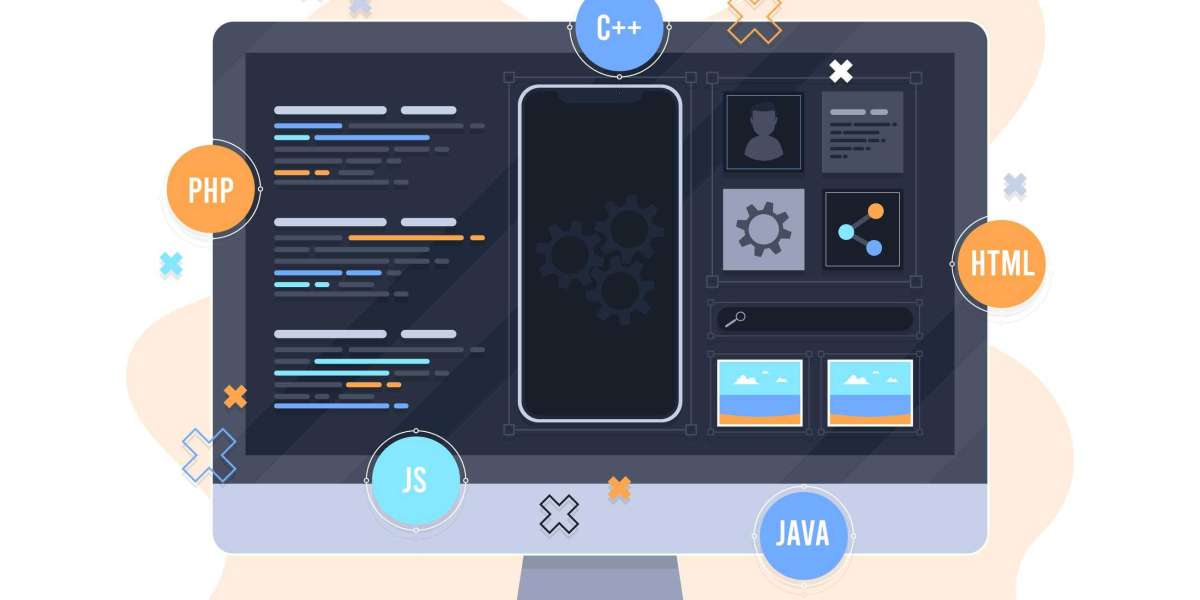As we move into 2024, the world of custom Java development is buzzing with exciting trends. Developers and businesses alike are eager to harness these trends to create more efficient, secure, and powerful applications. From integrating artificial intelligence to leveraging blockchain technology, the landscape is rapidly evolving. Here, we'll explore the top 5 trends in custom Java development that you need to watch out for in the coming year.
Key Takeaways
- Artificial intelligence and machine learning are becoming essential in Java development, enhancing functionality and efficiency.
- Blockchain technology is expanding beyond cryptocurrencies, offering new possibilities for secure and transparent applications.
- Multi-runtime microservices are gaining traction, allowing for more flexible and scalable software architectures.
- Cybersecurity is a top priority, with new strategies and tools being developed to protect applications from threats.
- Serverless computing, or Function as a Service (FaaS), is simplifying the deployment and scaling of Java applications.
Artificial Intelligence and Machine Learning Integration
Artificial Intelligence (AI) and Machine Learning (ML) are no longer just buzzwords; they have become essential components of modern software development. These technologies are setting new standards for functionality and performance across various industries.
Key Benefits of AI and ML Integration
- Enhanced Efficiency: AI and ML can automate repetitive tasks, allowing developers to focus on more complex problems.
- Predictive Analytics: These technologies enable the creation of predictive models that can forecast trends and behaviors, providing valuable insights for decision-making.
- Improved User Experience: AI-driven features like personalized recommendations and predictive text make applications more engaging and user-friendly.
Practical Applications
AI and ML are being used in a variety of ways to improve software development:
- Code Reviews That Are Automated: Tools that are driven by artificial intelligence can examine code for faults and offer changes, which speeds up the process of development.
- Predictive Algorithms: These algorithms can analyze data to predict future trends, helping businesses make informed decisions.
- AI-Powered Chatbots: Custom AI chatbots are replacing traditional support methods, providing instant assistance to users.
The integration of AI and ML in software development is not just a trend; it's a necessity for staying competitive in today's market.
Prospects
As we move into 2024, the role of AI and ML in software development will continue to grow. Developers will need to familiarize themselves with various AI platforms and their APIs to integrate these technologies effectively into their projects. Staying updated with these trends is crucial for gaining a competitive edge in enterprise application development trends.
Blockchain Beyond Cryptocurrencies
Blockchain is finding its footing beyond cryptocurrencies. There has been a rise in the number of blockchain-based applications due to the proliferation of mobile applications that place higher priority on greater security and superior quality.
In addition to the above, Blockchain-Oriented Software (BOS) systems include the following fundamental characteristics:
- Replicating data: Replicating Data means making copies of it and storing them on many different systems, which greatly increases the level of data security.
- Verification of requirements: Before moving on with every transaction, BOS systems evaluate the transaction's requirements to make sure they satisfy the criteria for successful validation.
- Sequential transaction logging: The Blockchain Operating System (BOS) is responsible for recording transactions in a log that is structured chronologically and is composed of linked blocks organized by a consensus method.
- Public-key cryptography: The BOS transaction process is built on public-key cryptography, which ensures that transactions are both secure and verifiable.
On the other hand, blockchain technology is not without its drawbacks; scalability and energy consumption continue to be obstacles that prevent its widespread use.
Why It Matters
- Enhanced Security: A better degree of security is ensured for user data as a result of blockchain's decentralized structure, which makes it harder to manipulate data and prevents unwanted access.
- Transparency Transactions: The blockchain allows for transactions to be transparent, which provides consumers with a clear and verifiable history of data transfers.
- Smart Contracts: Blockchain technology makes it possible to build smart contracts, which are contracts that automatically execute themselves and have their terms encoded directly into code. This allows for the automation and efficiency of a variety of procedures.
- Cryptocurrency Integration: Integration of Cryptocurrencies Blockchain technology serves as the basis for cryptocurrencies like Bitcoin and Ethereum, making it possible to conduct digital transactions via a transparent and secure system.
- Growing Career Opportunities: There are more employment opportunities available in the technology sector due to the growing popularity of blockchain technology. Knowing how to design apps that are based on blockchain technology opens new and profitable career pathways.
Blockchain is finding its footing beyond cryptocurrencies. The proliferation of mobile applications that place a higher priority on better security and greater quality has resulted in a rise in the use of applications that are based on blockchain technology.
Multi-runtime Microservices
Microservices architecture involves creating software applications as a collection of small, independently deployable, and modular services. Every service operates in its own process and interacts with one another using lightweight means, most of the time making use of an application programming interface (API) that is based on HTTP.
In 2024, microservices architecture is expected to evolve into multi-runtime microservices, also known as MACH architecture. Microservices-based, API-first, Cloud-native, and Headless are the several components that make up MACH. This design makes it possible for distinct services to be developed in a variety of programming languages, to make use of a variety of data storage technologies, and to be deployed on a variety of runtime environments. This variety allows for a more targeted and optimal approach to be taken for each component of the application, since it caters to the distinct demands and features of each individual service.
The primary advantage of multi-runtime microservices is their ability to leverage the strengths of various technologies and platforms. For example, a service requiring high computational power can be deployed in a runtime environment designed for such tasks, while another service dealing with real-time data processing can use an environment optimized for speed and low latency. This approach ensures that each service operates in its ideal environment and facilitates easier updates and maintenance, as changes to one service do not necessarily impact others.
In addition, multi-runtime microservices facilitate a more agile development process by enabling teams to concurrently work on many services without being dependent on one another.
Cybersecurity at the Forefront
A crucial component of software development for the year 2024 is security, which has become more important due to the growing complexity of cyber-attacks. It is becoming more common practice to include sophisticated security processes and to make use of artificial intelligence for threat identification. Reactive security measures are being replaced by proactive ones as the primary focus of attention in the security industry:
- Emphasis on DevSecOps: An emphasis is being placed on DevSecOps, which means that businesses are incorporating security into their DevOps processes to establish a culture in which security is a responsibility that is shared by all entities involved. Through this technique, it is guaranteed that security concerns are included throughout the software development lifecycle.
- Zero Trust architecture: The old perimeter-based security paradigm is being replaced by the Zero Trust framework, which works on the premise of "never trust, always verify." This framework is being implemented in lieu of zero trust architecture. To do this, it is necessary to authenticate every user and device, regardless of whether they are inside or outside of the organization's network.
- Growing acceptance of encryption: There is a rising trend in the utilization of robust encryption technologies to protect data during transmission and storage. This is especially true because data breaches are becoming more common. A growing number of sophisticated cryptographic methods, such as homomorphic encryption, are gaining popularity because they enable data to be processed while it is still encrypted.
- Emphasize secure coding practices: There is an increasing emphasis on teaching developers secure coding techniques. This concerns the execution of secure coding methods. During the development process, this involves doing vulnerability testing, conducting frequent code reviews, and using tools for static and dynamic analysis to discover and address any security problems that may have been introduced.
- Rise of cybersecurity mesh: The notion of cybersecurity mesh refers to a flexible and modular approach to security, in which each device receives its own protection, such as firewalls and network safeguards. This method is becoming more popular. Consequently, it contributes to the development of a security architecture that is more flexible and adaptive, able to deal with the ever-changing nature of contemporary cyber threats, thereby making the whole network protected.
Serverless Computing (FaaS)
Serverless computing, also known as Function as a Service (FaaS), is gaining significant traction in the tech world. This model allows developers to build and run applications without managing the underlying infrastructure. This leads to more efficient and cost-effective development processes.
One case is how Netflix uses Amazon Web Services Lambda for various applications inside its streaming platform. Lambda is used by Netflix for a variety of functions, including the encoding of movies, the management of backend operations, and the processing of user authentication. Lambda functions are activated whenever a user uploads a video. These functions encode and process the material to encode and convert it into multiple formats that are suited for streaming across a variety of devices. As a result, Netflix can dynamically expand its resources in response to demand without deploying or managing servers. This helps the company to provide consumers with uninterrupted streaming experiences while also minimizing expenses.
Google Cloud Functions is used by Spotify in order to manage a variety of backend operations that are associated with its music streaming services. The management of user identification, the processing of user-generated material, and the performance of backend activities for their music recommendation algorithms are all functions that are triggered. This ensures that consumers have a smooth and customized experience.
The meteorological Company, a division of IBM, uses IBM Cloud Functions to process and analyze huge amounts of meteorological data. Using serverless functions, they were able to execute real-time data processing, make predictions, and send individualized weather notifications to users depending on their locations. All of this was accomplished without the need to maintain the underlying infrastructure.
As a result of their event-driven design, these FaaS systems immediately begin execution in response to requests and change resource use according to the requirements of the situation. Because of its scalability and reactivity, the development process is simplified, making it especially suitable for applications that experience significant traffic. The Internet of Things (IoT), chatbots, and virtual assistants are rapidly being linked with serverless computing.
There has been a recent uptick in serverless computing, also known as Function as a Service (FaaS), with Amazon Web Services Lambda, Microsoft Azure Functions, and Google Cloud Functions leading the way in this industry. The use of FaaS enables developers to construct and operate applications and services without having to manage the underlying infrastructure, which results in development processes that are more efficient and cost-effective.
Conclusion
As we look ahead to 2024, it's clear that custom Java development will continue to evolve and adapt to new trends. From the rise of AI and machine learning to the growing importance of cybersecurity, these trends will shape the future of software development. Staying updated with these changes is crucial for developers who want to remain competitive and create innovative solutions. By embracing these trends, developers can ensure they are well-equipped to meet the demands of the ever-changing tech landscape. Continue your education, maintain your sense of wonder, and be prepared to adjust—2024 is shaping up to be an interesting year for the creation of bespoke Java applications.














